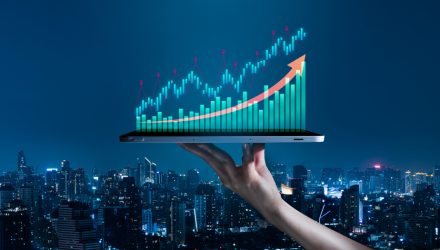As the exchange traded fund industry continues to evolve, investors can now access active equity strategies from seasoned money managers in a new type of semi-transparent ETF wrapper.
In the recent webcast, Best of Both Worlds: An Introduction to Semi-Transparent Active ETFs, Edward Rosenberg, Head of Exchange Traded Funds, American Century Investments, highlighted the next transformation in the actively managed space after semi-transparent active ETFs were approved in 2019.
Semi-transparent active ETFs provide access to actively managed strategies that limit disclosure of full holdings from a daily to a frequency on par with mutual funds. The SEC approved the Precidian ActiveShares structure in June 2019 later approved the NYSE, Fidelity, T. Rowe, and Blue Tractor structures in December 2019.
Rosenberg argued that semi-transparent active ETFs offers the best of both traditional active equity and ETF worlds, highlighting value add through the alpha potential of active management, access to a growing array of active equity strategies, the advantages of the more efficient ETF structure and the additional choice of structures that meet investor needs.
The Precidian semi-transparent active ETFs are slightly different from the ETFs we have all come to know. Looking at the creation and redemption process for ETF shares, ActiveShares comes with a basket for underlying securities available only to a designated authorized participant representative who delivers pro-rata or a proportional slice of the portfolio. The in-kind creations and redemptions process is effected through this AP-owned confidential account, which helps active managers protect their secret sauce from the public but still allows the ETF trade relatively in line with its underlying assets. The semi-transparent ETFs would then publish its holdings every quarter.
Calculating VIIV
The fund provides a verified intraday indicative value (VIIV), calculated and disseminated every second throughout the trading day by the Cboe BZX Exchange, Inc. or by market data vendors or other information providers. VIIV is based on the current market value of the securities in the fund’s portfolio on that day. VIIV is intended to provide investors and other market participants with a highly correlated per share value of the underlying portfolio that can be compared to the current market price.
Through this new ETF structure, American Century Companies now offers a suite of non-transparent ETFs, including the Focused Dynamic Growth ETF (FDG) and Focused Large Cap Value ETF (FLV).
The Focused Large Cap Value ETF tries to achieve long-term returns through an investment process that seeks to identify value and minimize volatility. Sandra Testani, Director of Product Management – Alternatives and ETFs, American Century Investments, explained that they focused on a concentrated large-cap value play to emphasize quality, or companies with high-quality assets, low financial leverage and sustainable competitive advantage, which should help reduce exposure to value traps. FLV includes companies attractively priced relative to their fair value and potential downside. Additionally, the management team incorporates fundamental research and downside analysis to manage risk, and dampen volatility, which should establish a risk/return profile for each stock helps lead to a higher probability of long-term outperformance.
“We believe investing in high-quality businesses selling at a discount to fair value has the potential to generate superior risk-adjusted returns over time,” Testani said. “Managing volatility on the downside is critical to producing long-term outperformance.”
The Focused Dynamic Growth ETF hones in on companies positioned for sustained high growth. The strategy invests in quality, sustainable growth companies with durable competitive advantages and prioritize long-term fundamentals where the market is less efficient. FDG is based on an investment philosophy of owning good businesses since stock outperformance comes from the acceleration in fundamental business trends, attractive valuations, and positive relative strength.
“Stock selection has been the primary driver of performance since the team has managed the strategy,” Testani added. “Stock selection has been a positive contributor to excess return in all time periods.”
Matt Lewis, Vice President, Head of ETF Implementation and Capital Markets, American Century Investments, also highlighted several trading tips to help investors establish more efficient trades, which also apply to semi-transparent active ETFs. For example, avoid trading in the first 15 minutes or last 5 minutes of the market open; try to trade ETFs with international exposure when those markets are open; use limit orders when buying and stop-limit orders when selling; leverage a block desk for large orders; speak with the ETF sponsor before buying or selling large quantities of an ETF; if you’re an advisor trading on the leading platform, use the institutional trading desk; and Utilize not-held order or call directly.
Financial advisors who are interested in learning more about semi-transparent actively managed ETFs can watch the webcast here on demand.








